Peavey MAX 150 Bedienungsanleitung
Lies die bedienungsanleitung für Peavey MAX 150 (53 Seiten) kostenlos online; sie gehört zur Kategorie Empfänger. Dieses Handbuch wurde von 29 Personen als hilfreich bewertet und erhielt im Schnitt 5.0 Sterne aus 15 Bewertungen. Hast du eine Frage zu Peavey MAX 150 oder möchtest du andere Nutzer dieses Produkts befragen? Stelle eine Frage
Seite 1/53

MAX® Series Bass Ampliers
Operating
Manual
www.peavey.com

ENGLISH
VENTILATION: For proper ventilation, allow 12" clearance from the nearest combustible surface.
All vents should have a minimum of 2" of free air space so air can flow thru the unit freely for proper cooling.
MAX® Series Bass Amplifiers
The Peavey MAX® Series is designed for superior tone, performance and reliability in portable bass amplification, with power ratings
up to 300 watts of power with Peavey’s DDT™ speaker protection and exclusive tone enhancements.
The Peavey MAX 100, MAX 150, MAX 208, MAX 250, and MAX 300 bass combo amps deliver huge bass tone with exclusive
Peavey designs, including unique psycho-acoustic low-end enhancement that adds bass without demanding anything extra from the
speaker—a testament to Peavey's technology-driven reliability. The EQ section includes three-band EQ, a gain boost featuring Peavey’s
patented TransTube® tube emulation circuitry, and switchable presets like Contour, Mid-Shift and Bright.
The MAX 100, MAX 150, MAX 250, and MAX 300 also feature a built-in chromatic tuner with mute, a tuned and ported enclosure,
1/8" headphone output and 1/8" auxiliary input. All models include an XLR direct output with ground lift, while the MAX 250 also
has a built-in tweeter.
Features: (vary according to model)
• Up to 300 watts of power
• Premium speakers
• DDT™ speaker protection
• Pre-gain control with TransTube® gain boost
• ree-band EQ with Overdrive, Contour, Mid-Shi, Bright, and Kosmos-C switches
• Tuned, ported enclosures
• Kosmos-C low-end enhancement
• Precision balanced direct interface with ground li
• 1/8" aux input
• 1/8" headphones output
• Chromatic tuner with mute (not on 208)
• Unique cabinet design allows for superior high-frequency dispersion in tight spaces.

3 5 7 9 11 13 14
(1) ACTIVE/PASSIVE PICKUP Inputs
ese 1/4" inputs are included so you can choose the appropriate setting for your instrument. e gain structure of the amplier is
modied to accommodate the outputs of dierent pickup congurations. e PASSIVE input is 10dB hotter than the ACTIVE input.
(2) GAIN
is knob controls input level to the preamp.
(3) OVERDRIVE
is crunch circuit is designed so that the volume of the amp will not change when the boost is switched on, but the distortion level
will increase depending on the level of the GAIN knob. For best results, rst set the distortion amount by adjusting the GAIN. Next,
set the desired volume using the VOLUME knob. At this point, the clean volume will match if the Overdrive is turned o.
(4) BASS
is knob provides a shelving tone control for low frequencies and provides cut/boost of +/-15 dB. e center point is at. e center
frequency is 50 Hz. -3 dB shelf corner frequency is 100Hz.
(5) CONTOUR
is button boosts highs and lows while simultaneously cutting mid tones, producing a "scooped" sound.
(6) MIDDLE
is knob provides a peaking tone control for Mid frequencies and cut/boost of +/-15dB. e center point is at.
(7) MID SHIFT
is switch controls the center frequency of the MIDDLE knob. When the switch is OUT, the middle frequency is 600Hz. e middle
frequency is 250Hz when the switch is pushed IN.
(8) TREBLE
is knob provides a shelving tone control for high frequencies and cut/boost of +/-15dB. e center point is at and the frequency is
6 KHz. -3dB; the shelf corner frequency is 4 KHz.
(9) BRIGHT SWITCH
is button provides a 10 dB boost to frequencies above 1KHz. To activate, depress the switch to its “IN” position.
(10) VOLUME
is knob controls the overall volume of the amplier.
(11) KOSMOS-C Subharmonic Generator
is Kosmos-C Low enhancement works by creating harmonics of signals in the bottom octave, where speakers are usually ineec-
tive. e harmonics are more easily reproduced, resulting in a perception of stronger bass. e eect is source dependent; obviously a
source with little energy in the bottom octave will not create booming bass.
(12) CHROMATIC TUNER (Not on Max 208)
Pressing the TUNE/MUTE button (13) will engage the chromatic tuner while muting the output to the speaker. e LED screen will
indicate which note is being played while the red and green LEDs above the screen indicate whether the note is at (red), sharp
(red) or in tune (green).
Control Panel MAX® Series
1 4 6 8 10 122
Produktspezifikationen
| Marke: | Peavey |
| Kategorie: | Empfänger |
| Modell: | MAX 150 |
Brauchst du Hilfe?
Wenn Sie Hilfe mit Peavey MAX 150 benötigen, stellen Sie unten eine Frage und andere Benutzer werden Ihnen antworten
Bedienungsanleitung Empfänger Peavey

6 Juli 2025
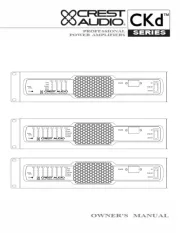
15 Juni 2025

19 September 2024

4 September 2024

4 September 2024

29 August 2024

29 August 2024

26 August 2024

21 August 2024

19 August 2024
Bedienungsanleitung Empfänger
- Lab Gruppen
- Seco-Larm
- PEMP
- Summit Audio
- Nubert
- Intertechno
- Bluesound
- Citronic
- Denon
- HEOS
- Advance Acoustic
- Valueline
- Zgemma
- SYNQ
- ELAC
Neueste Bedienungsanleitung für -Kategorien-
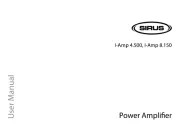
31 Juli 2025
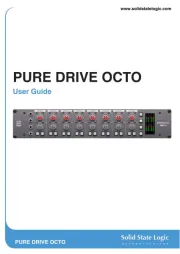
31 Juli 2025

31 Juli 2025

31 Juli 2025
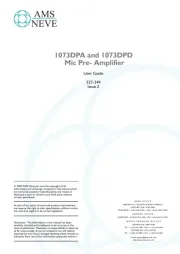
31 Juli 2025
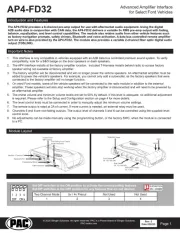
31 Juli 2025

31 Juli 2025
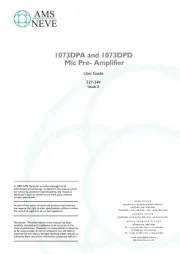
31 Juli 2025

31 Juli 2025

31 Juli 2025